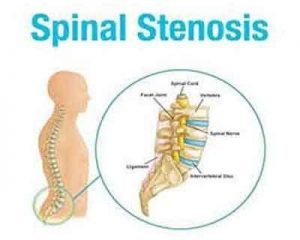- Home
- Editorial
- News
- Practice Guidelines
- Anesthesiology Guidelines
- Cancer Guidelines
- Cardiac Sciences Guidelines
- Critical Care Guidelines
- Dentistry Guidelines
- Dermatology Guidelines
- Diabetes and Endo Guidelines
- Diagnostics Guidelines
- ENT Guidelines
- Featured Practice Guidelines
- Gastroenterology Guidelines
- Geriatrics Guidelines
- Medicine Guidelines
- Nephrology Guidelines
- Neurosciences Guidelines
- Obs and Gynae Guidelines
- Ophthalmology Guidelines
- Orthopaedics Guidelines
- Paediatrics Guidelines
- Psychiatry Guidelines
- Pulmonology Guidelines
- Radiology Guidelines
- Surgery Guidelines
- Urology Guidelines
20 per cent elderly Indian population suffering from spinal stenosis : Experts

New Delhi : Around 20 per cent of the elderly Indian population is suffering from spinal stenosis and the figure might increase manifold in the coming years due to increasing obesity among them, doctors said.
According to doctors, the problem, which is more common among the overweight old population, has risen as obesity became common among them.
"Spinal stenosis is not a pleasant disease. It is very less among the older population having controlled weight, but now a days the problem of obesity has risen among the old population and they have started becoming a victim of spinal stenosis. The percentage is somewhere around 20 percent of the total old population of India," said Dr Deepak, a senior orthopaedician at the All India Institute of Medical Sciences (AIIMS).
Stating that the number of spinal stenosis patients has increased over the years, Deepak said: "Mostly, the patients come with the complaints of leg or arm weakness, lower back pain while standing or walking, numbness in legs or buttocks and balance problems and frequent falling."
He said countries like the US and Canada have similar problems among their older population, whose figures for the disease stand at 11-15 per cent of their old age population.
Spinal stenosis is one of the most common age-related back problems. It usually results from years of osteoarthritis, a thickening of the body's ligaments that connect the bones to the spine and a deterioration of the cushioning between disks in the vertebrae all of which cause the spinal canal to narrow.
As a result, nerves that travel down to the legs can become pinched near the bottom of the spine, causing pain and an inability to walk properly.
Arvind G. Kulkarni, head of Mumbai Spine Scoliosis & Disc Replacement Centre said: "About 75 per cent of cases of spinal stenosis occur in the low back (lumbar spine)."
"Spinal stenosis can be difficult to diagnose because it's symptoms can be caused by other conditions. Usually, people who develop stenosis have no history of back problems or any recent injury. When the condition is severe, only surgeries are mostly done to cure it."
"Exercise and physiotherapy is required to bring the patients to normal position," said Kulkarni.

Disclaimer: This site is primarily intended for healthcare professionals. Any content/information on this website does not replace the advice of medical and/or health professionals and should not be construed as medical/diagnostic advice/endorsement or prescription. Use of this site is subject to our terms of use, privacy policy, advertisement policy. © 2020 Minerva Medical Treatment Pvt Ltd